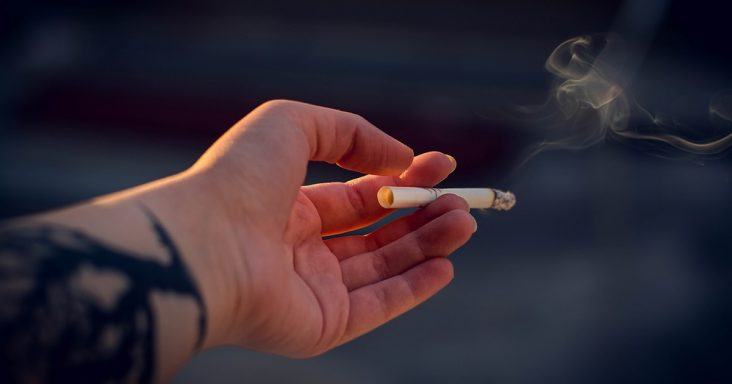Study shows Arkansas ranks low in lung cancer survival rate
by November 14, 2023 7:10 am 706 views

Photo credit: Irina Iriser
Arkansas ranks among the bottom states where data is available in lung cancer survival rates, is in the bottom half in lung cancer screening, and has one of the worst smoking rates according to the 2023 “State of Lung Cancer” report by the American Lung Association.
The report says Arkansas ranked 36th in its lung cancer survival rate out of 42 states where data was available. The state’s rate was 22.6% compared to a national rate of 26.6%. Oklahoma had the lowest rate at 21.2%, while Rhode Island had the highest rate at 33.3%. Data was not available for eight states or for Washington, D.C.
Arkansas ranked 33rd out of 51 when it comes to screening of high-risk patients. Those are defined as an individual ages 50-80 years and a current smoker or someone who has quit within the last 15 years, and someone with 20 or more “pack years,” meaning one pack a day for 20 years, two packs a day for 10 years, etc.
Arkansas’ rate was 3.7% compared to the national rate of 4.5%. Massachusetts had the best rate at 11.9%, while California was worst at 0.7%, although the report says that number may not reflect screenings at large regional managed care providers.
The report said that annual screenings could reduce the cancer death rate by up to 20% by detecting tumors earlier.
Arkansas was 50th out of 50 states and the District of Columbia when it came to smoking rates in 2021. The state’s rate of 21.1% was much higher than the national rate of 13.5%.
Data covered the five-year period for the years 2016-2020. State survival rates reflect the percent of cases diagnosed in 2013-19.
The report says that an American is diagnosed with lung cancer every two minutes, and that the disease kills more than 356 Americans every day. It is the leading cause of cancer deaths.
The good news is that during the past five years, the survival rate has increased nationally by 22% to 26.6%, and the five-year survival rate for people of color has increased 17% in the last two years. The report noted that 25% of white individuals survived five years, compared to 21% of black individuals, 23% of Latino individuals, and 22% of indigenous peoples. Asian or Pacific Islander individuals were the most likely to survive at 29%.
Whites were the most likely racial group to receive an early diagnosis at 27%, compared to 23% of Black, Latino, or Asian or Pacific Islander individuals. Twenty-four percent of indigenous peoples received an early diagnosis.
Lung cancer has a low survival rate compared to other cancers because cases are often diagnosed late.
Dr. Matthew Steliga, professor and chief of thoracic surgery at UAMS and Baptist Health, said many people who are eligible for lung cancer screenings don’t get them and then present themselves with a cancer that is larger or has spread and is more difficult to cure. Factors include access to care and a lack of awareness among patients and families. If patients aren’t seeing their primary care provider for routine health concerns, they are probably not getting screened for lung cancer.
“For those types of patients that don’t go to the doctor unless they are only feeling sick or having symptoms, lung cancer can be particularly significant because lung cancer does not usually cause any symptoms until it is more advanced,” he said. “Lung cancer doesn’t typically cause pain or trouble breathing or any kinds of symptoms unless it’s more advanced, and often by that point, the cure rates would be low. So our best chances of curing patients is early detection and combining that with smoking cessation programs.”
Steliga said most patients are eager to quit smoking and can be aided with evidence-based cessation techniques including nicotine patches and prescription medications. His office does not use electronic cigarettes as a treatment technique. Surgeries increasingly are minimally invasive.
Because of disruptions in cancer surveillance that occurred during the Covid-19 pandemic, data was not available from Arkansas and some other states for new cases, early diagnosis, surgical treatment and lack of treatment.
The report said that close to 238,000 people will be diagnosed with lung cancer this year. The national rate is 54.6 per 100,000. Utah had the best rate while Kentucky had the worst.
Over the last five years, the rate of new cases decreased 8% across the country, but the most recent year data was available for the report was 2020. That’s when the Covid pandemic disrupted medical care access, and rates declined for most types of cancer.
Data was also not available for Arkansas for early diagnoses. Nationally, 26.6% of cases are diagnosed early when the five-year survival rate is 63%. Massachusetts had the best rate at 33.3%, while Hawaii had the worst at 20.3%. Forty-four percent of cases are caught after the cancer has metastasized and the five-year survival rate is 8%. Early diagnosis rates increased 9% over five years and did not decrease significantly in 2020.
Arkansas also did not provide data for surgical treatment, which can be done if the disease is diagnosed early and has not spread. Nationally, 20.8% of cases involved surgery, a 4% improvement over the last five years. Massachusetts had the highest rate at 31.3%, while New Mexico had the worst at 13.5%.
The report said that tobacco use accounts for 80-90% of lung cancer cases. Other causes include secondhand smoke and exposure to year-round particle pollution. Exposure to radon, a naturally occurring radioactive gas, is another cause of lung cancer and the leading cause among nonsmokers.
